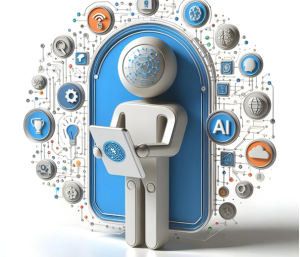In the fast-paced world of retail, staying ahead of the competition requires embracing cutting-edge technologies. One such innovation that has transformed the retail landscape is Electronic Shelf Labeling (ESL). These digital displays, also known as Shelf Labels, are revolutionizing the way products are priced, managed, and presented in stores. In this comprehensive guide, we will explore the impact of ESL on the retail industry, its benefits, and how businesses can leverage this technology for a competitive edge.
The Evolution of Shelf Labels:
Traditional paper-based shelf labels have been a staple in retail for decades. However, with the advent of digitalization, the need for more efficient and dynamic pricing solutions became evident. Electronic Shelf Labeling emerged as a game-changer, replacing static paper tags with dynamic digital displays. This shift not only streamlined pricing processes but also opened up new possibilities for retailers to enhance the shopping experience.
Benefits of Electronic Shelf Labeling:
- Real-Time Price Updates:
ESL allows retailers to update product prices in real-time, eliminating the need for manual adjustments. This not only saves time for store staff but also ensures that customers always see accurate and up-to-date pricing information.
- Dynamic Pricing Strategies:
Retailers can implement dynamic pricing strategies effortlessly with ESL. Prices can be adjusted based on factors such as demand, inventory levels, and even time of day, enabling businesses to optimize revenue and stay competitive.
- Improved Operational Efficiency:
The automation provided by ESL extends beyond pricing. Inventory management becomes more efficient, as the system can automatically update stock levels and trigger reordering when necessary. This reduces the risk of stockouts and overstock situations.
- Enhanced Customer Experience:
ESL contributes to an enhanced shopping experience by providing customers with clear and accurate product information. Interactive displays can also offer additional details, such as product reviews, nutritional information, or promotional offers, enriching the overall customer experience.
Implementing Electronic Shelf Labeling:
- Integration with Existing Systems:
To fully capitalize on the benefits of ESL, retailers need to integrate these systems with their existing infrastructure. This includes POS (Point of Sale) systems, inventory management software, and pricing databases. A seamless integration ensures smooth operations and accurate data across all platforms.
- Choosing the Right Technology:
There are different types of ESL technologies available, including LCD, e-paper, and LED displays. Retailers should carefully assess their specific needs and choose a technology that aligns with their goals. Factors such as display clarity, power efficiency, and cost should be considered during the selection process.
- Training and Change Management:
Implementing ESL involves a shift in processes and workflows. Proper training for store staff is crucial to ensure they can effectively use and troubleshoot the new system. Change management strategies should be employed to help employees adapt to the technology and understand its benefits.
The Future of Electronic Shelf Labeling:
- IoT Integration:
The Internet of Things (IoT) is playing an increasingly significant role in the retail industry. ESL can be integrated with IoT devices to gather data on customer preferences, shopping patterns, and inventory levels. This data can then be analyzed to make informed business decisions and personalize the shopping experience.
- Augmented Reality (AR) Enhancements:
The integration of AR with ESL opens up exciting possibilities for enhancing the in-store experience. Customers can use AR applications to receive additional information about products, access virtual reviews, or even visualize how a piece of furniture might look in their home before making a purchase.
- Sustainability Initiatives:
ESL contributes to sustainability efforts by reducing the need for paper and minimizing waste associated with outdated or incorrect paper labels. As environmental concerns become more prominent, ESL aligns with the growing demand for eco-friendly practices in retail.
Conclusion:
In conclusion, the adoption of Electronic Shelf Labeling represents a significant step forward for the retail industry. From real-time pricing updates to enhanced customer experiences, ESL offers a plethora of benefits for both retailers and consumers. As technology continues to advance, the future of ESL holds even more exciting possibilities, from IoT integration to augmented reality enhancements. Businesses that embrace this innovation will not only streamline their operations but also position themselves at the forefront of a dynamic and competitive retail landscape. Shelf labels are no longer just markers of price; they are the digital conduits shaping the future of retail












